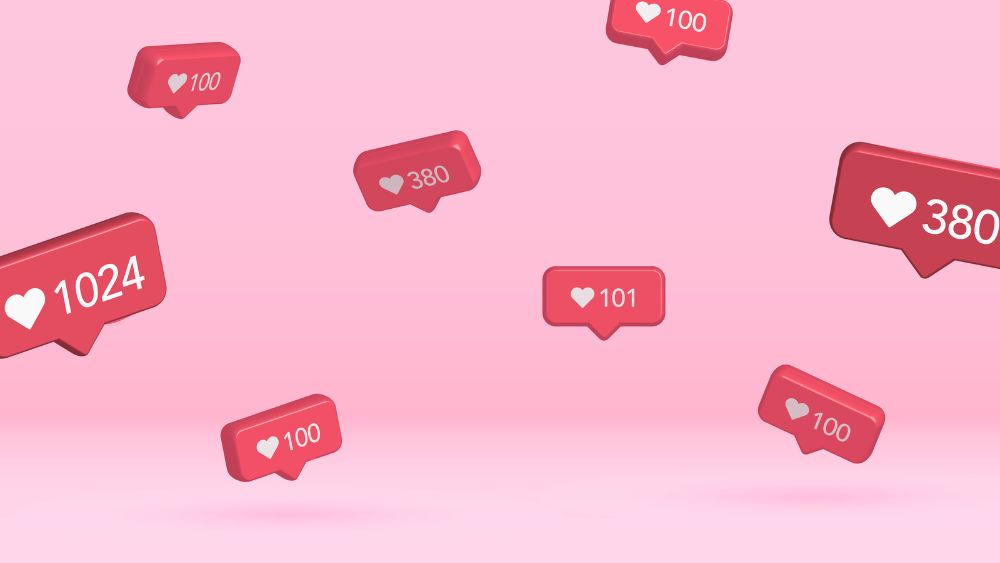Insights
INSIGHTS
All Topics
Social media facts you need to know in 2025
03 Jan 2025by Ioan Marc Jones
We explore the latest facts and stats about social media, looking at consumption trends, general usage, the rise of smaller platforms, the decline of so-called classics, and some key facts about the big hitters such as Facebook, YouTube, Twitter, Instagram, Snapchat, TikTok, LinkedIn, and so on
Hate it or love it, social media has become an important part of our personal and professional lives. Social media has become a vital marketing tool, one that very few organisations can afford to neglect, with roughly 93% of the world’s internet users currently on social media. That accounts for more than 4.7 billion people worldwide. That’s 4.7 billion people that your organisation can reach.
Social media is no longer desirable. It is necessary. But so many organisations fail to effectively use social media platforms, often falling into predictable mistakes such as neglecting the written and unwritten rules, approaching the wrong demographics, using an inappropriate tone of voice for the platform, and so on. Success in social media, as with most things marketing, depends on an in-depth knowledge of the subject, the platform, your audience, and your broad objectives.
That’s why it’s useful to know the most up-to-date and reliable facts about social media. It helps you to plan, strategise, and make the right decisions. So, we are going to explore the main social platforms, some emerging platforms, and some declining platforms and give you a rounded picture of the state of social media in 2025.
So, without further ado, let’s start with some general statistics.
Skip to: General social media facts
Skip to: Facts about Instagram
General social media facts
Social media is an important part of marketing – and contemporary life generally. The below stats show the clear influence that social media has on our personal, public, and working lives, and shines a light on the various ways different people are using social media.
There are currently more than 8 billion people currently living on earth. More than 4.74 billion people across the world use social media, an increase of increased by 4.2% in 2022 alone, according to Hootsuite.
And the users of social media are overwhelmingly adults (or near adults) with more than 75% of the world’s social media users being over the age of 13.
People worldwide spend an average of 2 hours and 28 minutes per day on social media, which is a one-minute increase compared to the time tracked in 2021. The countries that spend the most time on socials, according to Hootsuite’s Social Media Trends 2023 report, are Nigeria, Brazil, and South Africa, and the countries who spend the least time are South Korea, Japan, and Austria.
The same report found that the average user visits 7.2 social media platforms a month. Women aged 16–24 use social the most, apparently, spending an average of 3 hours and 10 minutes per day. The marketing potential on social media is thus huge, particularly if you effectively target demographics.
Most organisations are on social media. According to data collected from Statista, Entrepreneur, NealChaffer, Truelist, and Adweek, nearly 94% of businesses use some form of social media. And, the bigger the company, the more likely they are to have a social presence, according to research.
The non-profit sector is even more prolific on social media – perhaps for good reason, as raising awareness is so often part of their mission. According to Nonprofit Tech for Good, for example, 87% of non-profits across the world are on social media.
The budget for socials is huge. Statista projects that organisations will spend more than $247bn (approximately £200 billion) on social advertising in 2023, a projected growth of 4.53% on the previous year.
According to Insider Intelligence, marketers take up a lot of that spend, with a grand total of $65 billion (approx. £52.6 billion) in advertisement.
The social media landscape seems to suggest that organisations will use social media more, not less. And that’s likely true. But there are some trends that pose a counter argument. Consider, for example, that overall trust in social media platforms has been declining in recent years.
Consider, too, that platforms such as Twitter have lost advertising money due to perceived instability, a verification process undermines authenticity, and a general increase in hate speech and fake news.
So the future remains unwritten. But it is likely that organisations will remain on socials, even if that means pivoting their marketing to focus on a different platform.
Below we will look at the main platforms individually, particularly exploring elements of usage, demographics, trends, and so on.
Facts about social media: Facebook
Facebook is the most used social media site in the world. Since its launch in 2006, the company has amassed 2.9 billion active monthly users. Facebook is particularly well used outside of cities, which makes it an important tool for local communities. In recent years, ethical concerns have been raised, including around their misuse of personal data, ineffective moderation of hate speech, and political interference. But the company remains essential for organisations of all shapes and sizes.
As mentioned above, Facebook is the most used and most popular social media platform in the world. The average daily time spent on Facebook is 33 minutes, according to Broadband Search. There are more than 6 million advertisers on Facebook and more than 60 million active business pages.
The most followed page (Facebook’s App page) has more than 183 million likes and the most followed person (Cristiano Ronaldo) has more than 163 million followers, as of May 2023.
The demographics of Facebook have shifted substantially. According to Statista, for example, nearly 57% of Facebook users identify as male, compared to just over 43% who identify as female, which undermines perceptions about Facebook. Almost 20% of worldwide users are men aged between 25–34, which is vital information for marketers aiming to reach that demographic.
India boasts the largest Facebook audience, according to Hootsuite, with more than 327 million users, and the U.S. follows quite far behind in second with 179 million users. Very few Facebook users are just Facebook users, only 0.06% of unique users, with most users also taking advantage of other sites. More than 77% of Facebook users are on Instagram, for example.
People use Facebook for all kinds of reasons. But a few core reasons stand out. The primary reason people use the platform, according to Hootsuite, is to message family and friends. Another core reason is to gather news. One-third of U.S. adults, according to Pew Research, regularly get their news from Facebook.
On top of that, Facebook users tend to visit local business pages regularly, with 66% suggesting they do so once a week, and many also shop online using the platform.
Charities and non-profits are active on Facebook – and for good reason. According to NPSource, for example, 18% of donors across the world have given through Facebook Fundraising tools and, of those, 88% suggested that they’d give again in the future. In an average peer-to-peer fundraising campaign, 15–18% of donations are referred directly through Facebook. And, importantly, 84% of users highlight issues important to them – demonstrating the awareness-raising power of Facebook.
Facebook, despite ethical issues in recent years, remains an essential platform for businesses and charities alike, particularly when it comes to raising awareness of brands and causes. For more information, check out our article that covers the basics of using Facebook.
Facts about social media: YouTube
The first ever video was uploaded to YouTube in 2005. Today, nearly twenty years later, 500 hours of video are uploaded to the platform every single minute. The website is a staple of the internet and plays an important role in organisations of all sizes. Video has become increasingly important as a marketing medium, so it’s unlikely that the growth of YouTube is going to stop anytime soon.
YouTube, after Facebook, is the second most popular social media network in the world. The platform, according to the Social Shepherd, has more the 2.1 billion monthly active users. YouTube, according to a report published by Hootsuite, generates more than 66 billion users per month.
The daily time spent on the platform, on average, is 19 minutes. And, according to Wyzowl, approximately 2500 new videos are uploaded to YouTube every single minute. People consume YouTube in various ways. But mobile accounts for an increasing amount of watch time, with 41% of viewing happening on mobile.
In terms of demographics, YouTube has always been a platform for the young. According to BackLinkO, YouTube is most popular with people aged 15–35. And children under 11 are big users of YouTube, as 80% of parents claim their kids use the platform.
The platform is particularly popular with Gen Z, so much so that 95% of teens in the U.S. use YouTube, according to Pew Research, figures that are likely mirrored (or at least very similar) in the U.K. and the rest of Europe.
Around 54% of YouTube users identify as male and 46% identify as female, according to Hootsuite, numbers remarkably similar to Facebook. And, as with Facebook, India boasts the most YouTube followers, with 225 million users, followed by the U.S. with 197 million users.
The platform is used for various reasons, but mostly consumption of trending content or content relevant to user needs. Consider, for example, that the most popular search terms on the site are ‘song’, ‘movie’, and ‘video’. Consider, too, that 59% of Gen Z users say they use short-form videos to discover content and then they tend to watch longer videos of that content as a result.
That’s a particularly interesting fact, when you consider YouTube Shorts have been viewed over 5 trillion times, according to stats published by YouTube. That means that many users go onto YouTube to find more content, not simply access the content they already want to watch.
People are buying on YouTube. But perhaps not in the usual way. Users go to YouTube to inform purchasing decisions – which can be far more powerful than traditional advertising. According to Think with Google, for example, 68% of users watch video to help them decide on a brand or service.
In terms of the charity sector, according to NPSource, only 28% of charities and non-profits are on YouTube, quite a startling number compared to Facebook. That’s perhaps understandable, as so many charities are small, and videos take more commitment than posts on Facebook.
Still, the appeal of YouTube to charities is clear. NPSource explains that 57% of people who watch non-profit videos donate, which is a startlingly high number, and 68% of viewers watch a similar video in the next 30 days – meaning it can raise funds and awareness in equal measure.
So YouTube looks to be around for years to come. But YouTube for businesses and charities often demands more expenditure, more time and resources spent on creation, so you just need to ensure that the means justify the ends. YouTube is noisy, so consider whether you’ll be able to stick out from the crowd.
For more information, check out our article on the basics of using YouTube.
Facts about social media: Twitter
Twitter is a microblogging social media platform that emerged in 2006, focused on brevity and immediacy. The platform has been through significant changes in the past year since the takeover of Elon Musk. Questions remain over its longevity, as many advertisers pulled out due to perceived instability and trouble around verification, authenticity, and increasing hate speech. The future of the platform will depend on decisions in the upcoming weeks and months, but for now it remains a potential option for organisations, especially in terms of raising awareness.
Twitter remains popular, despite recent issues. There are, according to a Social Shepherd post in May 2023, 450 million monthly active users. But there are active users (in the sense of people who go online at least once a month) and then there are active users (the Twitter faithful, the perma-Tweeters). Consider, for example, that 10% of Twitter users account for 92% of all Tweets.
Questions remain over Twitter’s growth. The platform was growing when Elon Musk took charge – though revenue growth seemed in decline – with a significant increase in users from 2021 to 2022.There was some caution after Musk’s takeover, which led to an initial boom in growth followed by a slowing down of that growth and then a reduction in advertising appetite.
But, despite the above, many believe Twitter will continue to grow. VPNAlert predicts that Twitter users will grow by a modest 1.8% in 2023. And the platform is growing among Gen Z users, at a rate 30% higher than that of Instagram – which will come as a surprise to many.
But some preach caution. Business Insider, for example, says that Twitter users worldwide are expected to decrease by 5.1% in 2025. And, on top of that, half of journalists are apparently considering leaving the site – a serious problem, as so many people turn to Twitter for news.
But, ultimately, the growth (or decline) of Twitter will result from decisions in coming months. Organisations should continue to monitor the platform, perhaps more closely than other major social media platforms on the market. So, with that in mind, let’s turn to stats on demographics.
The demographics of Twitter paint an interesting picture. The platform is used most in the U.S., followed by Japan. The platform is most popular among 25–34 year olds, which accounts for nearly 40% of all users, according to the Social Shepherd.
Twitter is more popular with millennials than Gen Z, says Statista, though as mentioned that may change in years to come, with a renewed appetite for Gen Z. Twitter users, as with the above platforms, mostly identify as male (56%, according to Statista).
People use Twitter for various reasons, but the most common is gathering news. Indeed, according to the Social Shepherd, 50% of users turn to Twitter for news. Events were also cited as a reason to use the platform, as well as following popular politicians, leaders, and celebrities.
It is unsurprising, therefore, that the most popular Twitter account belongs to Barack Obama (144 million followers) with Musk, Justin Bieber, Rihanna, and Katy Perry making up the rest of the top five, as of 2023.
Marketers are still using Twitter. Indeed, 82% of content marketers are on Twitter, according to the Social Shepherd, and more than 118 million businesses use the social platform. Twitter ads are capable of reaching more than 544 million users worldwide, according to Hootsuite, and Elon Musk has suggested that these ads have been improved and will continue to improve in the future.
In terms of charities, Twitter remains important, largely because of the way people use Twitter. They look at news, follow prominent leaders, engage in causes, even promote activism.
So it’s no surprise that, according to Funraise, 77% of charities worldwide have a Twitter profile. That’s perhaps not surprising because Twitter can (and does) translate into action. According to NPSource, for example, 55% of people who engage with non-profits on Twitter end up taking action.
For more information, check out our article that covers the basics of using Twitter.
Facts about social media: LinkedIn
LinkedIn is one of the oldest social media platforms in the world. But it’s undergone huge changes in recent years, growing from a dull and dreary place that collected CVs to a bright and vibrant community of engaged professionals. The changes followed Microsoft’s acquisition in 2015 and the consequent investment. LinkedIn has long cornered the market for professionals on socials – even when it was dull and dreary – but now it has grown, found its feet, and offers plenty to marketers.
LinkedIn is perhaps the natural home of businesses and non-profits, at least in terms of brand awareness. There are more than 58 million companies on LinkedIn, according to LinkedIn, and more than 875 million users across the world.
The platform is a welcome place for marketers, as 75% of B2B marketers advertise on the platform, according to the Social Shepherd. And, on top of that, marketers can see up to two times higher conversion rate compared to other platforms. LinkedIn ads boast a substantial audience, according to Hootsuite, with the ability to reach 857 million people, more than 10% of the world’s population.
The platform continues to grow. LinkedIn experienced a 17% growth in revenue by the end of 2022 – and users have largely been growing since the Microsoft takeover. The networking site has expanded into content and currently has 150 million subscriptions to newsletters on LinkedIn.
The majority of LinkedIn users (57%) identify as men, according to Statista. Millennials are fans of LinkedIn, making up 60% of LinkedIn users. More than 194 million people from the U.S. use the social media platform, according to Hootsuite, which awards the U.S. the highest user rate in the world.
People mainly use LinkedIn to find jobs. There are 101 job applications submitted every second on the platform, according to statistics published by LinkedIn. And every week, more than 50 million people use LinkedIn to search for new jobs. Eight people are hired every minute on LinkedIn.
But it isn’t just job searching. According to Hootsuite, 29% of LinkedIn users across the world suggest they also use the platform for keeping up with current events and trends. It is perhaps no surprise, therefore, that 66% of LinkedIn users also use Twitter.
Companies, particularly big companies, tend to fare well on LinkedIn. The most followed brands, as per information released by LinkedIn, are as follows: Amazon, Google, TED Conferences, Microsoft, Unilever, and Forbes.
Charities are also on LinkedIn – 56% of charities worldwide, according to research – and for good reason. According to Acxiom, LinkedIn members are 56% more likely than the average internet user to donate to a charity and more than 1 in 2 LinkedIn members donate.
LinkedIn may be the oldest social network, but it’s still one that companies and charities neglect. There is ample room to grow an audience, raise awareness and funds, and find leads on the platform. It just takes some time, dedication, and resources. So it may well pay to pivot to LinkedIn.
For more information, check out our article that covers the basics of using LinkedIn.
Facts about social media: Snapchat
Snapchat was founded in 2011 by Evan Spiegel, Reggie Brown, and Bobby Murphy. The unique point of sale was that the content was only available to view for a short time – content was ephemeral, in the moment, immediate. That idea blossomed and Snapchat now has more daily users than Twitter and seems to be growing at drastic levels, so it will likely eclipse other platforms in the future.
As of January 2023, Snapchat ranked as the 12th most popular social media platform in the world. It boasts approximately 363 million daily active users. Snapchat has published recent statistics on usage, which show the Snapchat has more than 750 million monthly active users, more than 3 million subscribers, and more than 300,000 lens creators who have used their Lens Studio.
Users tend to spend an average of 31 minutes per day on Snapchat, according to Broadband Search. Interestingly, the Snapchat data shows that on average more than 250 million daily active users engage with augmented reality – one of the core offerings that Snapchat provides.
For years, we saw Snapchat as an emerging platform. But, as with TikTok, it’s impossible to deny that Snapchat is now a major player. And the platform shows no sign of slowing down. Year-over-year growth for daily active users was 19% in 2022 – and there is no reason not to expect similar growth in 2023. On top of that, in 2022, Snapchat’s revenue increased to $4.4 billion.
The advertising potential on Snapchat is huge. Advertisers could reach 634.8 million users as of January 2023, according to Data Reportal. Ads may lead to purchases, according to Snapchat For Business, which says that users are 34% more likely to make a purchase after seeing an ad on the platform. That is intriguing, as data suggests that Snapchatters hold $4.4 trillion in spending power.
The young are particularly active on Snapchat. The data shows that over 75% of 13–34 in more than 20 countries use Snapchat, highlighting the core demographic in simple terms. Snapchat reaches 75% of the Gen Z and millennial populations across the globe. The site is most popular with men and women aged 18–24, according to Hootsuite, and the least popular cohort is men over the age of 50.
India is a prominent user of the platform, as we’ve seen with many other social media sites. It is the largest Snapchat user base, according to Statista, with more than 144 million users.
For charities, Snapchat is a drastically underutilised tool, with many failing to even enter the space. The stats relating to charities and Snapchat, for example, are not easily attainable and Snapchat was not included in many of the other studies and research around charities and social media. In short, it’s a platform that it seldom used by non-profits, but it should be, as it is bursting with potential.
For more information, check out our article that covers the basics of using Snapchat.
Facts about social media: TikTok
TikTok was launched in 2016 in China and a year later globally. The platform offers a mix of video content, ranging from lip syncing, to stunts, to sketches, to informative snippets, to book and film recommendations, and so on. TikTok has rocketed in recent years. We once talked about it as an ‘emerging’ platform, as with Snapchat. But it has fully emerged, commanding attention from organisations of all shapes and sizes.
TikTok boasts more than 1.5 billion users as of 2023, according to Demand Sage. Of those, 1.05 billion are monthly active users. It is now the sixth most popular social media platform in the world and the most popular overall app in terms of global downloads.
The website has drastically grown in recent years and projections of growth remain impressive. In the U.K., for example, projections suggest that platform will have 15 million users by 2025.
TikTok has huge advertising potential. Ads on the platform, according to Hootsuite, reach 18.6% of internet users worldwide. And, according to TikTok themselves, Ads are particularly successful when they convey the message in the first three seconds, reaffirming the immediacy of the platform.
TikTok’s main users are overwhelmingly young. In the U.S., for example, a quarter of users are between 10–19 years of age. Indeed, more than half of people aged 18–29 use TikTok in the U.S. And the majority of the user base, in contrast to many of the above platforms, identify as female at 61% – a higher percentage than any gender on any platform.
According to Data Reportal, TikTok is popular in Asian Countries, such as Indonesia (107 million users), Vietnam (50 million), Philippines (43 million), and Thailand (40 million).
People mainly use TikTok for entertainment, according to Hootsuite. And that is reflected in the most popular accounts, which are largely dedicated to pure entertainment. Indeed, the most popular account belongs to Khabane Lame (@khaby.lame) with more than 159 million followers. And the most popular brand account is TikTok’s own channel with 67 million followers.
Charities, such as the British Red Cross and UNICEF, have been effectively using TikTok, leading by example, taking advantage of the hashtag function and generating huge numbers. But many are struggling behind, despite the obvious potential. The platform offers a particularly great opportunity to charities working with the young or aiming to reach young donors or volunteers.
And the platform offers great fundraising potential. In 2021, for example, more than 75,000 donations were made in support of various organisations and causes globally such as fighting hunger, supporting humanitarian relief efforts, and promoting health and wellbeing. But, even with that potential, and the promise of TikTok for Good, charities are still falling behind the commercial sector.
For more information, check out our article that covers the basics of using TikTok.
Facts about social media: Instagram
Instagram has established itself as a major player among the social media platforms. Early adopters were primarily young, but the platform has flourished and taken on users from various ages as a result. Facebook (now Meta) bought Instagram in 2012 and continued its growth, but the platform saw a decline in users in 2019. The platform picked up, embracing new functionality, but competition has become fierce, with the two hottest major platforms (Snapchat and TikTok) both offering similar functionality. Instagram will remain a big player for years to come. But we may see a decline.
Instagram is an immensely popular platform, building up a strong user base from almost a decade of impressive growth. As of 2023, Instagram boasts over 2.3 billion monthly active users. Over 95 million photos are uploaded every day, according to Word Stream.
The average Instagram user spends 29 minutes per day on the app and the ‘Stories’ function has 500 million daily users. According to Statista, Instagram is the fourth most popular social media platform in the world.
It’s important to mention that most social media sites are growing. But slower growth, even though it constitutes growth, can prove damaging to organisations. Consider, for example, that Instagram’s user base grew in 2023 but, as shown by HubSpot, not as much as in the past years.
Competition is the main problem, especially around short-form videos, because the static photos are gaining less traction. Indeed, static photo engagement has been in decline since 2019 – hitting Instagram hard.
Brands and charities can reach huge numbers of people on the platform. DataReportal suggests, as of 2023, brands can advertise to more than 1.3 billion users on Instagram. That’s particularly appealing, considering that 25% of Gen Z and Millennials use Stories to find products and services.
The ads, taken together, can reach nearly 30% of internet users, according to Hootsuite. According to Insider Intelligence, Instagram generated $43.2 billion in ad revenue in 2022. That is a slight increase from 2021 when the platform’s ad revenue amounted to $42.1 billion.
The demographics of Instagram again show a platform used by the younger crowd, but perhaps not as young as the other platforms that specialise in short-form video. The largest age group of users are those ages 25–34, according to Statista. It is the favoured platform of Gen Z.
The majority of users (48%) identify as male, with 52% identifying as female. As with many of the above platforms, the majority of users are from India (230 million), followed by the U.S. (143 million).
People still use Instagram for static pictures and increasingly for short video content. Sport is particularly popular on Instagram. Indeed, the most popular Instagram post of all time is Lionel Messi and his Argentina teammates celebrating their victory at the 2022 FIFA World Cup in Qatar.
Lifestyle trends and celebrities are also popular drivers to the site. That is demonstrated with a quick look at the top accounts as of 2023: Cristiano Ronaldo (585 million followers), Lionel Messi (461 million), Selena Gomez (415 million), and Dwayne Johnson (376 million).
The top brands are Instagram, followed by Nike and National Geographic, emphasising the importance of great imagery.
Charities have long used Instagram. According to NPSource, 30% of charities use Instagram to raise money and awareness. And, according to the Global NGO Report, 50% of non-profits have an Instagram profile. But charities are perhaps not posting as much as they should.
The report suggests 30% of non-profits share less than one per week, 24% share once weekly, 21% share once every other day, 17% share once daily, and 8% share twice or more daily. Instagram has long been an option for charities, but still does not seem like the main option for many.
For more information, check out our article that covers the basics of using Instagram.
Facts about social media: Conclusion
We have detailed all the main social media platforms, looking mainly at their user levels, engagement, recent growth and projected growth, demographics, and the reasons for use. That, hopefully, will give you a sense of the best ways to approach each platform.
Remember that social media is a tricky, complex, and multi-faceted eco-system, one that demands time and attention. Our advice is to focus on mastering individual platforms (the ones that best suit needs, based on demographics and reasons of use) rather than attempting to conquer all of them.
Ioan Marc Jones
More on this topic
Related Content
Recommended Products
Recommended Products
Featured Products
Related Videos
Our Events
Charity Digital Academy
Our courses aim, in just three hours, to enhance soft skills and hard skills, boost your knowledge of finance and artificial intelligence, and supercharge your digital capabilities. Check out some of the incredible options by clicking here.































